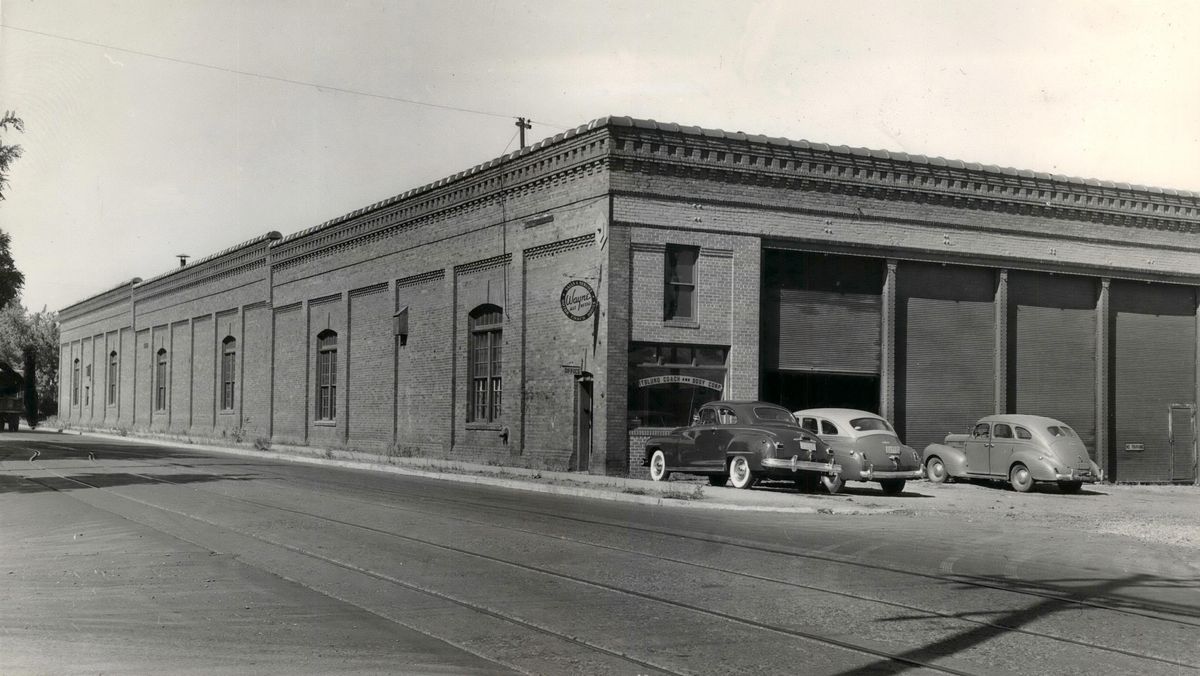Then and Now: The Spokane streetcar barn

Spokane’s first urban public transit was a horse-drawn streetcar that went into operation on April 10, 1887. It was operated by Spokane Street Railway and the fare was a nickel. The coach, pulled by two horses, could hold about 25 people.
The first route started on Riverside Avenue and Washington and traveled west to Coeur d’Alene Park in Browne’s Addition. Later, another car went east on Riverside and one went to the county courthouse on Broadway Avenue. Pioneer businessmen J.J. Browne and Anthony Cannon, along with partner A.J. Ross, built the four and a half miles of track.
The Washington Water Power Co. was formed in 1889 to develop the Monroe Street dam and hydroelectric power plant. And its electricity would power the next generation of streetcars.
The first electric cars showed up in 1889. In 1892, the WWP bought the SSR, the short-lived Spokane Cable Railway and smaller lines, most of which were which were built by developers to induce home sales outside the downtown core. As the city grew, so did the demand for power.
The next year WWP bought Natatorium Park, a theme park and recreation center on the west end of Boone Avenue, which boosted use of the Boone Avenue streetcars.
Developer and businessman Jay P. Graves bought the Spokane and Montrose Street Railway in 1902 and reorganized it as Spokane Traction Company, going head-to-head with WWP for new streetcar routes and passengers. Graves also invested in interurban railroad lines.
Historian Jim Kershner noted that streetcar use peaked around 1910, around the time Graves built the Nine Mile Falls dam to power his growing trolley system.
Graves and the WWP lines merged in 1922 to create Spokane United Railway. In the 1930s, SUR began adding buses and new routes. The last streetcars ran in 1936.
Graves, who died in 1948, also built the Country Homes development in North Spokane and donated the land for Whitworth University.
WWP sold their buses to the National City Lines Company in 1945. With ridership falling dramatically in the late 1960s, the city took over the aging bus fleet and sought public funding for the city’s transportation needs. Today, Spokane Transit Authority operates the city’s transit system, funded by rider fares and a sales tax levy.